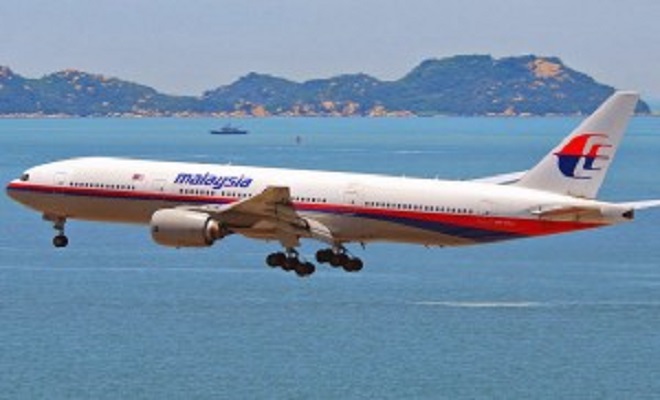 NEO.org
NEO.org
Featured
A Year On, MH370 Case no Closer to Being Cracked
by , via NEO.org:
The disappearance of Malaysia Airlines Flight MH370, which took off from Kuala Lumpur carrying 239 people one year ago, continues to defy conventional explanation. Despite the largest multinational search and rescue effort ever conducted, not a trace of debris from the aircraft has been found, nor has the cause of the aircraft’s erratic change of trajectory and disappearance been established. MH370 has proven to be the most baffling incident in commercial aviation history.
The Beijing-bound jetliner’s transponders were shut off without a mayday call less than an hour into the flight before veering wildly off course while flying over the South China Sea. Aviation experts claim that the aircraft’s movements were consistent with deliberate action and that calculated changes in the flight’s trajectory indicate that the plane was continually under the command of a pilot. Investigators used satellite data from the craft to chart two possible corridors along which the missing plane may have sent out its final communications.
The northern corridor extended from northern Thailand and upward toward the border of Kazakhstan and Turkmenistan while the southern corridor stretched from the western Indonesia to the remote southern Indian Ocean. Investigators have focused their search on the southern corridor, a 60,000 square kilometer patch of the Indian Ocean some 1,800 kilometers west of Perth, Australia. Despite the use of the best available underwater detection technology, the multinational search operation has failed to produce any evidence of the aircraft crashing into the sea.
Autopilot Vulnerabilities
Dozens of theories have proliferated over the last year, drawing on technical analysis and deductive estimations. That the aircraft’s movements were consistent with deliberate action is the official position of the Malaysian government, and this remains the starting point for any explanation of the incident. This means that even if the plane experienced a technical or systems failure resulting in an on-board fire or depressurization that rendered the crew unconscious, the suspension of the aircraft’s communication system and its change of trajectory was the result of an intentional intervention.
This suggests that either the pilots executed the maneuver, whether intentionally or under duress, or the flight controls were compromised in a technical way that resulted in flight control being withdrawn from the cockpit. Investigators have cleared all passengers of any suspicious motives, while the flight’s pilot, Captain Zaharie Ahmad Shah, a reputable pilot with over 30 years’ experience with Malaysia Airlines, has been the main suspect of the investigation by Malaysian authorities. No strong evidence has surfaced to implicate Shah or his co-pilot, Fariq Abdul Hamid, who unsuccessfully attempted to make a phone call using his mobile phone several minutes after the plane disappeared from radar, according to reports.
Dr. Mahathir Mohamad, the former prime minister of Malaysia, declared in a series of articles and interviews his suspicion that the aircraft’s autopilot system had been compromised, calling on manufacturer Boeing to respond to questions regarding the company’s uninterruptible autopilot control system, patented in 2006 (patent number US7142971B2), enabling an aircraft to be remotely piloted from the ground using radio waves and global satellite positioning systems to counter hijacking attempts.
Boeing officials quoted in 2007 report published in the London Evening Standard give the clear impression that this system was developed for the purpose of being installed on Boeing airliners. “After it has been activated, the aircraft will be capable of remote digital control from the ground, enabling operators to fly it like a sophisticated model plane, maneuvering it vertically and laterally… Once triggered, no one on board will be able to deactivate the system,” the British paper reported.
In 2012, Boeing declared its intention to install new security mechanisms on several of its 777 series aircraft, including the models used by Malaysia Airlines, over concerns the aircrafts’ inflight entertainment system, which includes USB connections, could allow hackers to compromise a plane’s onboard computer system. A 2013 US Federal Register report also raised concerns that this security vulnerability could undermine the safety of model 777-200 aircrafts. Boeing has since offered no specific comment on these concerns.












